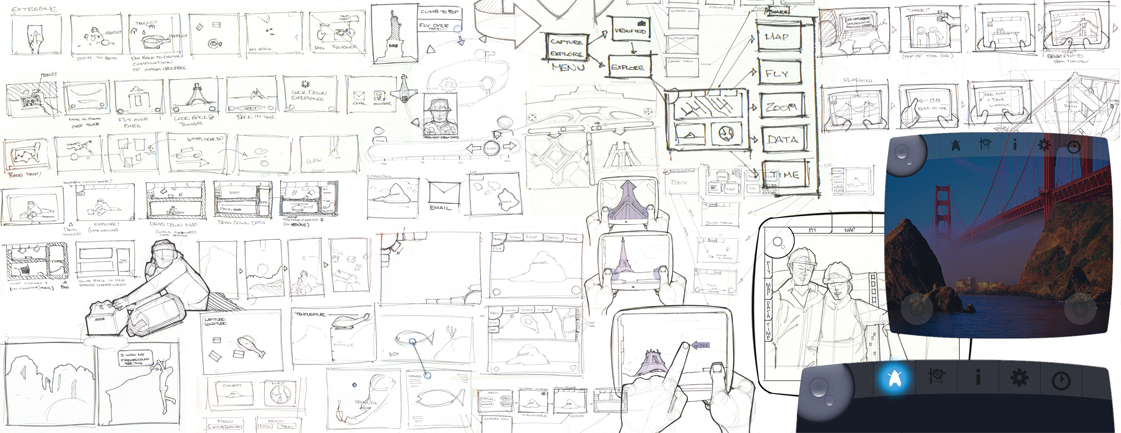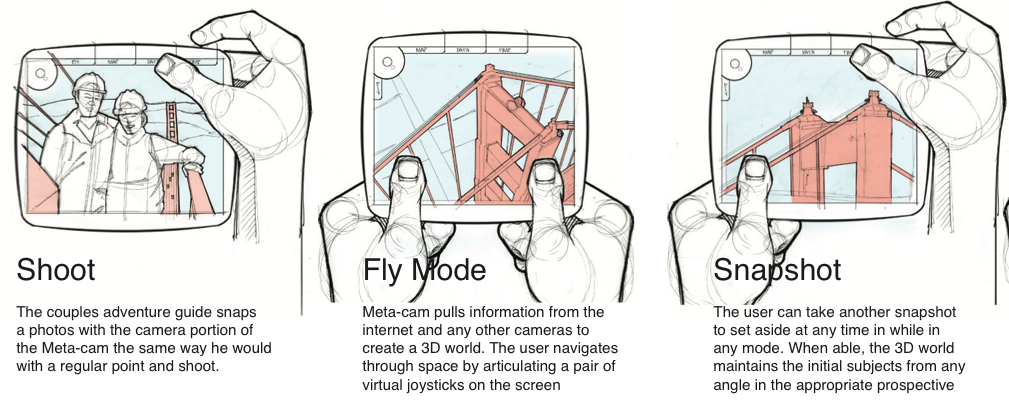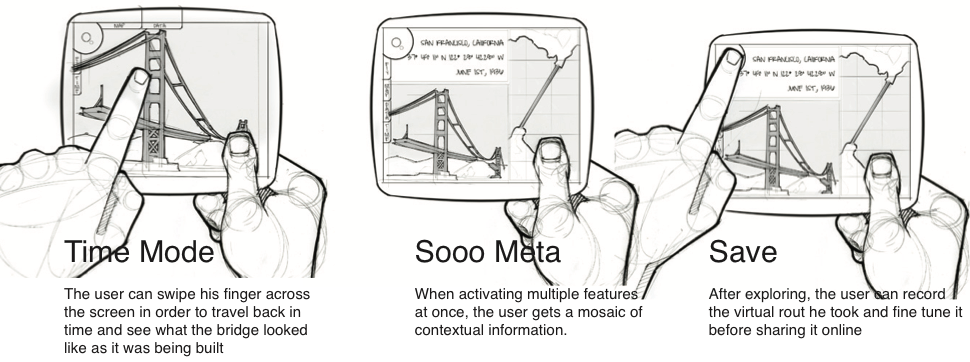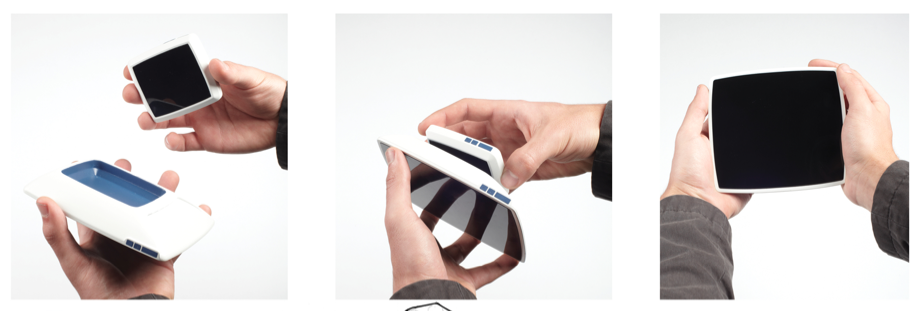Meta-cam enables users to capture and enjoy rich digital experiences. The small point and shoot camera can be attached to it’s hub which includes a larger screen, more processing power and more storage space.
Intel sponsored this studio project, Synchronicity, at California College of the Arts. The brief was to consider the future of how products interact with each other.
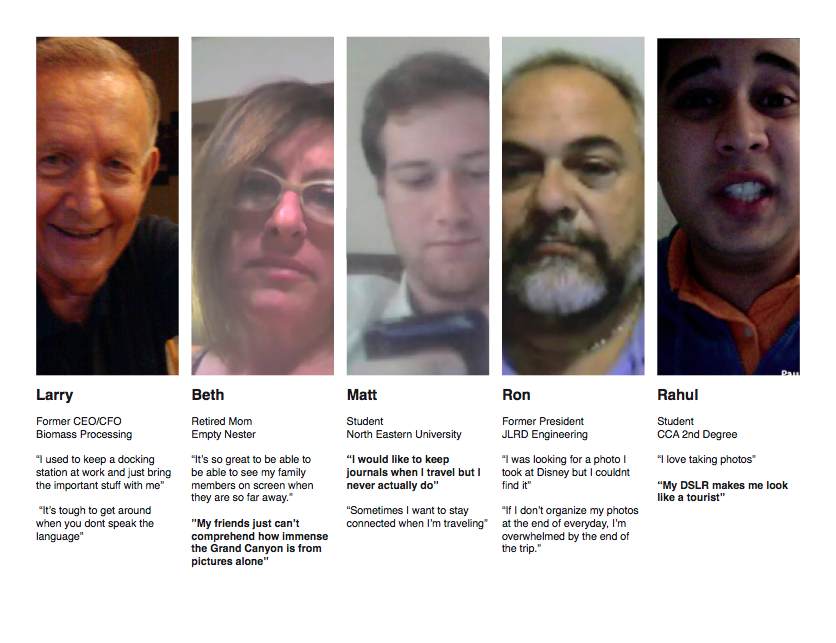

I interviewed five people who travel often. I also did a trend-scrape of current technologies in 2009. I was particularly interested in photography and the implications behind the growing availability of image recognition and many other forms of metadata that can be used to knit together rich content.
- “I would like to keep journals when I travel but I never actually do.”
“My DSLR takes the best photos but it’s hard to lug around everywhere and it makes me look like a tourist”
- “I don’t want to have to rely on a tour guide to get around and see things worth seeing.”
- “My friends at home only get a tiny snippet of the full picture, they can’t get a real sense of how amazing the Grand Canyon really is.”
From the interviews I drew a few strong insights.
- Is it possible to enhance a travelers experience by allowing them to more passively document and share their experience?
- Is it possible for them to document better and access better information but be less encumbered by their devices?
I also created personas for the two users of whom I was most focused. Students and semi-retirees tend to be available to travel more often than others. Interviews also showed that men were more often interested in capturing photos during a group trip.

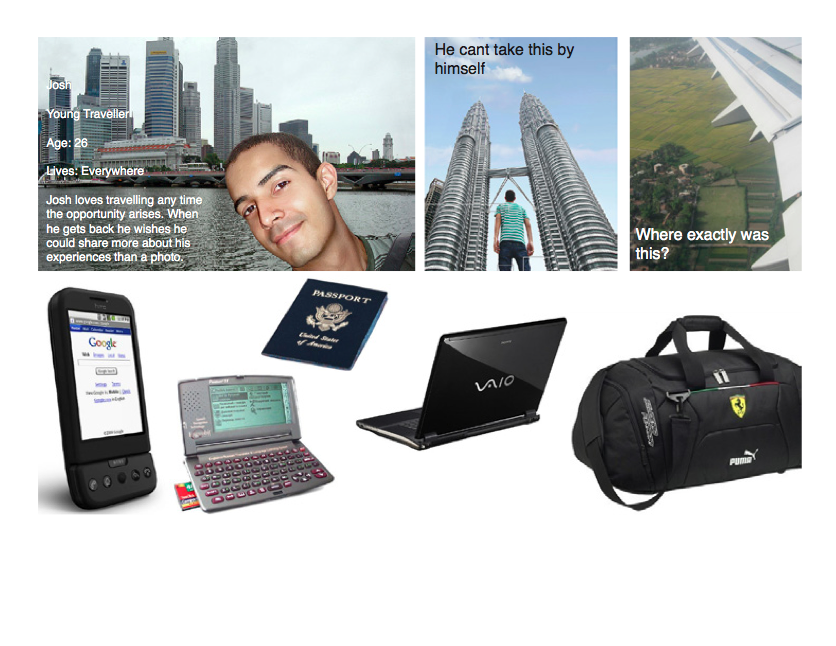
I story-boarded experiences that could potentially be enhanced by a new approach to travel photography.
The camera can detach from the larger display so it is more portable. Later the larger display makes it easier to review content. It also has more local storage and processing power.
